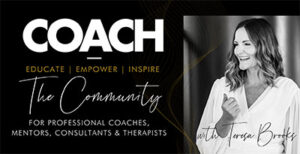Mindfulness to manage Anxiety – Jill Savage

Covid-19 is a prominent word in our daily language now.
Along with this, we have a daily feast of negative, changeable and often disturbing news about the impact of the virus with little certainty or reassurance on how any of this will really play out long term.
Unfortunately, our brain holds a negative bias rather than a positive one from our evolution and doesn’t much care for a daily cocktail of uncertainty and threat.
For some, it can feel like a meteorite attacking our sanity where we ruminate, catastrophize; creating low mood, anxiety and depression from the stories we tell ourselves. But it isn’t what happens to us that causes us to suffer, it’s what we say to ourselves about what happens that causes us to suffer. The negative thoughts are more ‘sticky’ in our brains and can make being positive harder.
We all react to these events in different ways; stoicism, despondence, anger, anxious, denial, balanced. Each one of us has a uniquely wired brain based on our own experience and formative years.
As a coach and mindfulness teacher, I draw on all my resources to counter my own wobbles and anxiety to create some semblance of equanimity for myself and those around me.
These practices, from the world of mindfulness and compassion, can help to increase resilience, positivity and growth mindset and can help in these very testing times.
7 practices for more balance and ease
- When you are in your head, switch to being in your senses
If we find ourselves in ruminating stories about the impact of Covid-19, then we are in our heads and in our own “narrative.”
Once we are AWARE of what our brains are doing then we can switch our attention to an ‘experiential’ mode where we experience the world through our senses.
This may include our feet being planted firmly on the ground, sitting on a chair, feeling the sun or breeze on your face, noticing the beauty of nature. By switching your attention to your senses, it can make a big difference and nip those catastrophizing thoughts in the bud.
- Soothing Breathing Rhythms
If you feel triggered, you will be in your sympathetic nervous system and possibly in hyper-arousal. We feel safer and soothed in our parasympathetic nervous system and one way to do this is to practice a soothing breathing rhythm, where you deepen and slow the breath to about 5 breaths per minute and soften and open at the heart area. The key is to have a smooth in-breath and a smooth out-breath.
5/5 seconds for both is most typical however find a count that works for you. You can build up your 5/5 soothing breathing rhythm slowly. For example,
Breathe in for 2,3, and then breathe out for 2,3
Breathe in for 2, 3,4 and then breathe out for 2,3,4
Breathe in for 2,3,4,5 and then breathe out for 2,3,4,5
Allow yourself to fall into a natural rhythm on the air coming in through
the tip of your nose and deep down into the diaphragm as it rises on the in-breath and falls away on the out-breath.
Choose a narrative for yourself such as “Mind Slowing Down” and “Body Slowing Down” as you keep to a nice even rhythm. Notice yourself becoming more grounded in the body, more soothed and more in balance.
You may notice a deeper connection with yourself and a wider perspective and perhaps a wiser action to follow. (credit Professor Paul Gilbert for this practice from his Compassion Focussed Therapy).
- Self-care and a kind wish
Offer yourself a daily kind wish or action. Do this in the moment if you notice yourself getting caught up with rumination and stress. A kind action can be anything from a soothing cup of tea in your favourite mug, a nice hot bath, listening to music or eating your favourite food or your hand on your heart saying ‘This too will pass’ Ask; “How can I best take care of myself in this immediate moment?” or “What do I need for myself to be ok right now?”
- Blessings/Gratitudes exercise
To re-dress the negative bias, a lovely exercise before going to sleep is to count three blessings. Reflect on three things that happened during the day that you are happy about and why you believe they happened. Write them down perhaps in a special journal and reflect on why they have come into your life. The outcome from doing this exercise is astonishing.
- Nourishing activities
Examine what nourishes you and what depletes you. Think about what lifts your mood, energises you and makes you feel calm and centred? What increases your sense of being alive and present?
For me, it’s going for a walk (while we can) being in the garden, reading a novel and doing my (online) dance class and staying connected with loved ones and friends (using all the technology).
You may need to get creative and many community online activities will offer ways to engage and support. Seek out what you like and don’t be solo, even if living in your literal single space for a while.
Also, think about what depletes you? During this outbreak of coronavirus, I found the news not only depletes me but also stresses me out, so I reduced my intake of it and felt much calmer and centred as a result.
Make a list of what nourishes you and what depletes you; increase the nourishing things and reduce the depleting ones. Use physical, mental and emotional boundaries to protect your mindset, health and wellbeing.
- The Pause
Learn how to pause. During your day, stop at various points and ask yourself “What is going on for me right now? “How am I feeling right now?” You will stop automatic reactivity and come back to yourself. You can then decide what you need in that moment…a kind action, soothing breathing, connecting to your senses or appreciating something and being grateful.
- Stay Connected
Nothing gives us more pleasure than being with loved ones, friends and family. It takes us into a content, safe and connected system which is great as an antidote to stress and keeps us mentally well. During self-isolation and social distancing, this is going to be more challenging.
However, we have the gift of technology to stay connected to others and, as humans, we find ways to adapt.
You can use any of these steps at any time to help you regain more control over your emotions in a world where it can be easy to feel out of control.
Re-balance, centre and come back to yourself. You can only control yourself.
‘May you find wholeness in the imperfection of life. May the sunrays of kindness shine through the raindrops of suffering and may the rainbow of compassion bring its healing power to you and all beings’
Frits Koster – Mindfulness based Stress Reduction Trainer
Jill is a qualified Executive Coach and has a passion for leaderships, coaching people to manage their minds, be resilient, thrive and discover who they really are. She delivers Mindfulness Based Stress Reduction programmes for corporates and individuals. Jill holds a diploma in coaching supervision, is accredited with Coaching Supervision Academy, is a Co-Active trained coach and has completed mindfulness teacher training level 2 with Bangor University.






